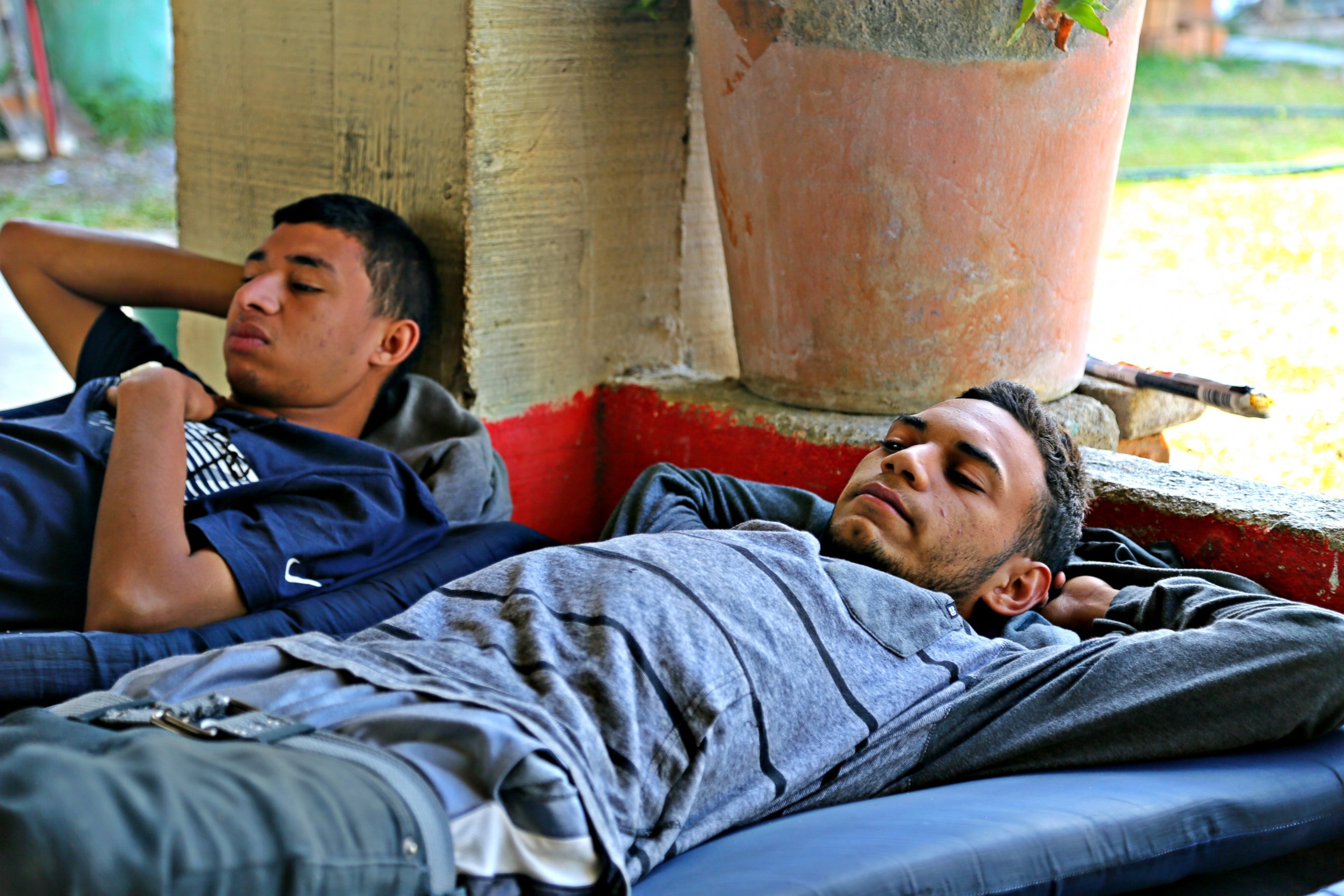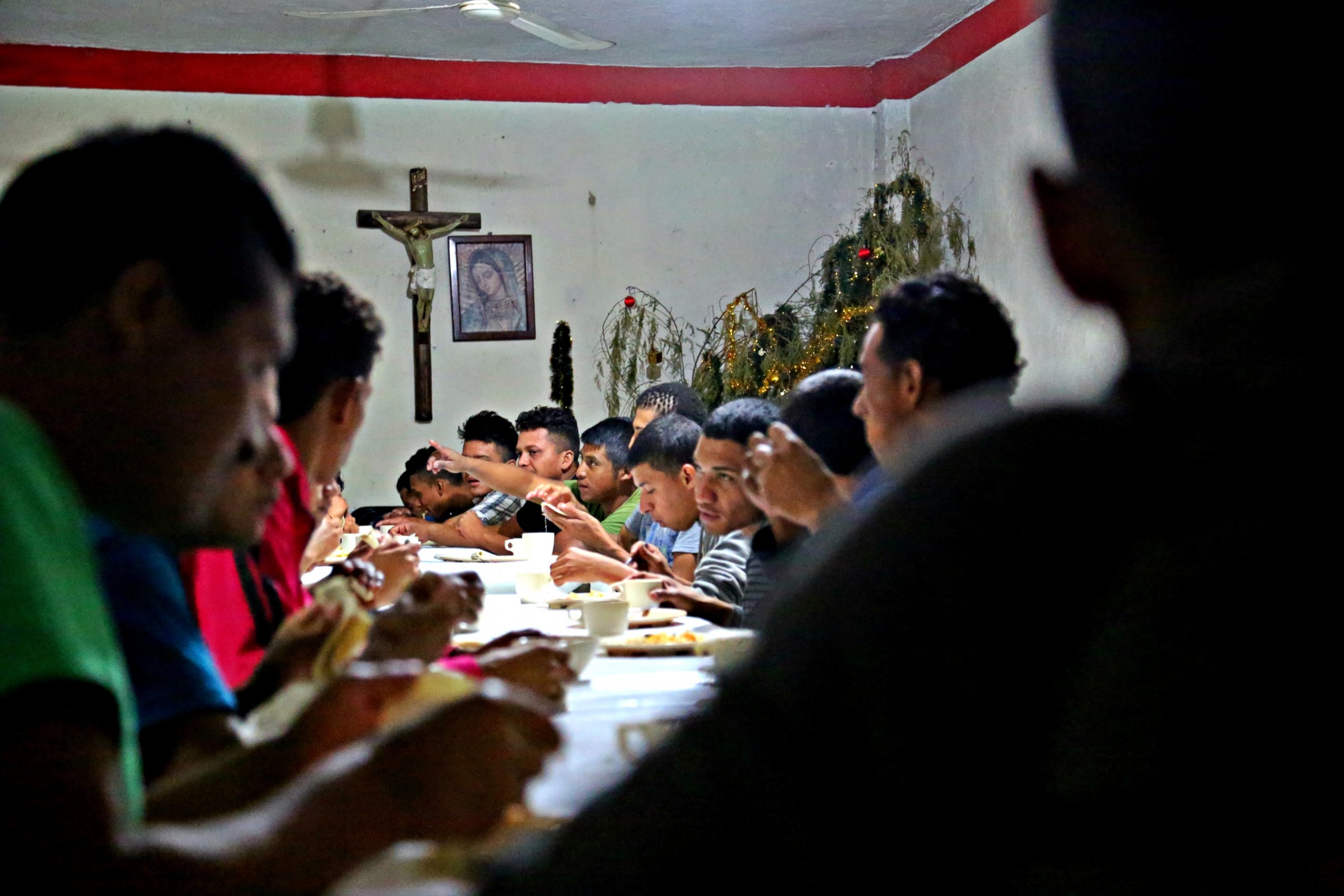Reporter's Notebook: Before US Border, Central American Migrants Face a Harrowing Journey Through Mexico
Many Salvadoran migrants choose a harrowing journey to escape violence.
— -- There’s a bridge over the Suchiate River, a river that separates Mexico and Guatemala. It’s the only official border crossing in the area for miles.
A few blocks away from the bridge, Edwin and Jose, two migrants from El Salvador, the murder capital of the world, contemplated how to cross without being caught.
We were tracing the first dangerous stretch of the migrant trail, traveled by most Central Americans trying to escape brutal gang violence back home.
When we met Jose and Edwin at this crossing, they told us this was their second attempt to reach the United States. To them, the uncertain road ahead is more appealing than the horrors they left behind in their home country.
“It’s very bad. Violence. Poverty. Everything. There’s nothing there,” Edwin said in Spanish.
Edwin said they pray to God to help them cross.
Like most Central Americans fleeing their homelands, Edwin and Jose’s plan was to cross into Mexico illegally. They don’t have passports, just a few treasured belongings.
Jose wears his reason for escaping on his back and arms in terms of the scars he has from bullet wounds.
“Thank God they didn’t kill me,” he said in Spanish. “Because they tried. Understand? That’s why we’re victims in these situations.”
They said if they went back home, they would be killed.
Edwin and Jose both knew that once they crossed the Suchiate River into Mexico, their journey would become more treacherous.
Mexican authorities are sweeping up migrants in record numbers before they reach the U.S. Most are deported, but Mexico, enforcing its own immigration laws more than ever, has created another crisis, with bandits and human traffickers preying on migrants looking for ways to head north.
When Edwin and Jose reached the other side of the river bank, they disappeared over the bank.
We rushed over the legal crossing on that bridge to meet them, and when we reached the other side of the river, a preacher yelled warnings to other migrants stepping off rafts but Edwin and Jose were long gone.
So we traveled north to find them, through immigration checkpoint after checkpoint.
We stopped at one of the church-run shelters that dot the route north, offering a haven for road-weary migrants attempting the journey, to look for them. This one was run by a priest named Father Flor Rigoni, who said they are in the midst of a humanitarian crisis of Biblical proportions.
“We deal with children, women, adults, elderly people, everybody,” he said, meaning everybody is trying to get out.
“The majority of the migrants from Central America today are not economic migrants,” Father Rigoni continued. “But they come here sometimes with bullets still in their bodies asking just for the chance.”
He described most of these travelers as refugees rather than migrants.
One of the people we met in the shelter, Carlos, also from El Salvador, said he fled with his wife Jessica and three small children in the hopes of raising them far from the routine and indiscriminate killings back home.
El Salvadoran families are affected the most, Carlos said, and his goal as a father was to keep his family safe.
The shelter was crowded, but Father Rigoni said it was no less so than in years past.
Still, no sign of Edwin and Jose.

We continued further north to in Arriaga, the southern most stop in Mexico for freight trains the migrants call “La Beastia,” or the “Beast” train. Migrants often climb on top of the train which has earned its name because so many people get hurt, killed or maimed.
We spotted a weary trio walking the trail by the tracks. One of them, 19-year-old Luis also from El Salvador, said he hadn’t seen Edwin and Jose, but he was following the same route and had traveled almost 200 miles by foot.
He led us to another shelter nearby. At this shelter we met another group of teens from Honduras. Before they are allowed inside, they are frisked and searched – a necessary indignity to keep the shelters safe from the surrounding violence.
But the shelter is just a temporary reprieve. Most shelters only allow migrants to stay for three days, and even here, not everyone felt safe.
Hansel, 22, said he can’t trust anyone and lives in fear of retribution from the MS-13 gang -- their gang sign is spray painted at the local train station.
“Somebody steal [from] me,” he said. “Somebody took my phone. Somebody steal my money, steal my everything.”
Hansel’s story is heartbreakingly common. According to the Mexican government, three quarters of those who pass through this area will be assaulted.
We continued looking for Edwin and Jose. Two days after losing them at the border, they finally responded to our texts.
“Hi. This is Jose. Sorry for not answering my phone but ‘the migra’ chased us,” his text said. “The migra” is immigration authorities.
They told us they were hiding near the train tracks. But after nearly an hour of searching for them, we got another text saying they were caught.
Up the road, we went to try to find them at a detention center, a facility called the “Kennel” that is outfitted with a chain-link fence and chicken wire to hold migrants sharing a sweaty room.
The officer in charge shooed us away, swearing he had no Salvadorans in the Kennel, but he wouldn’t let us speak with any of the migrants there.

As we headed back to the shelter, we received a final text from Jose. It was a picture from his holding cell. He said he didn’t know where he was, only that he and Edwin were being deported. He then said he and Edwin would try to make the journey again.
Back at the shelter by the train tracks, we checked in with a group of boys from Honduras, who after settling in seemed to share a moment of ease, laughing and ribbing each other. It’s a brave façade that showed cracks during the shelter’s evening prayer as some of the boys broke down in tears. One of them told us he was crying because he believed he would never see his family again.
The priest said that maybe 30 percent of the migrants at his shelter, probably less, would make it to the United States.